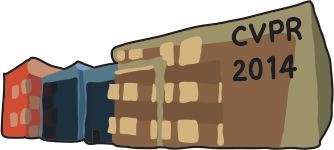-
Curvilinear Structure Tracking by Low Rank Tensor Approximation with Model Propagation
AbstractRobust tracking of deformable object like catheter or vascular structures in X-ray images is an important technique used in image guided medical interventions for effective motion compensation and dynamic multi-modality image fusion. Tracking of such anatomical structures and devices is very challenging due to large degrees of appearance changes, low visibility of X-ray images and the deformable nature of the underlying motion field as a result of complex 3D anatomical movements projected into 2D images. To address these issues, we propose a new deformable tracking method using the tensor-based algorithm with model propagation. Specifically, the deformable tracking is formulated as a multi-dimensional assignment problem which is solved by rank-1 l1 tensor approximation. The model prior is propagated in the course of deformable tracking. Both the higher order information and the model prior provide powerful discriminative cues for reducing ambiguity arising from the complex background, and consequently improve the tracking robustness. To validate the proposed approach, we applied it to catheter and vascular structures tracking and tested on X-ray fluoroscopic sequences obtained from 17 clinical cases. The results show, both quantitatively and qualitatively, that our approach achieves a mean tracking error of 1.4 pixels for vascular structure and 1.3 pixels for catheter tracking.
Related Material
[pdf][bibtex]@InProceedings{Cheng_2014_CVPR,
author = {Cheng, Erkang and Pang, Yu and Zhu, Ying and Yu, Jingyi and Ling, Haibin},
title = {Curvilinear Structure Tracking by Low Rank Tensor Approximation with Model Propagation},
booktitle = {Proceedings of the IEEE Conference on Computer Vision and Pattern Recognition (CVPR)},
month = {June},
year = {2014}
}
These CVPR 2014 papers are the Open Access versions, provided by the Computer Vision Foundation.
Except for the watermark, they are identical to the accepted versions; the final published version of the proceedings is available on IEEE Xplore.
Except for the watermark, they are identical to the accepted versions; the final published version of the proceedings is available on IEEE Xplore.
This material is presented to ensure timely dissemination of scholarly and technical work.
Copyright and all rights therein are retained by authors or by other copyright holders.
All persons copying this information are expected to adhere to the terms and constraints invoked by each author's copyright.

